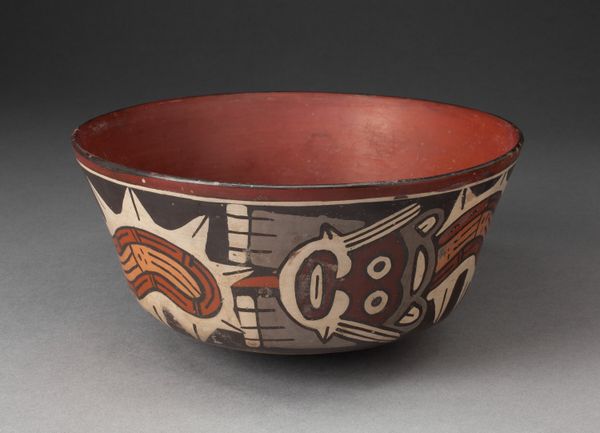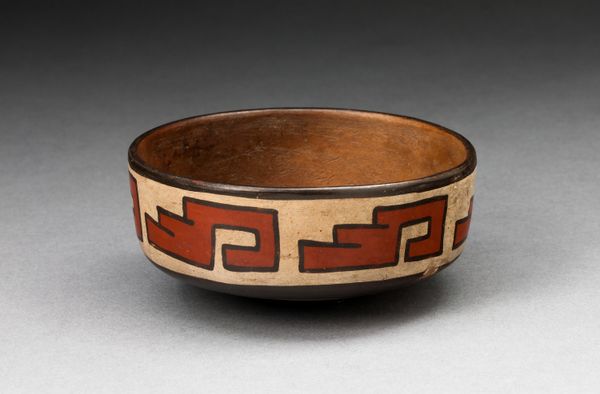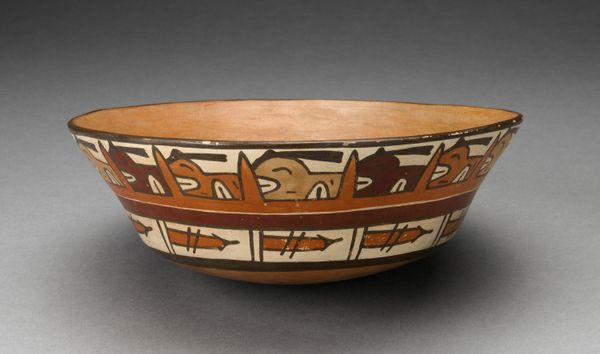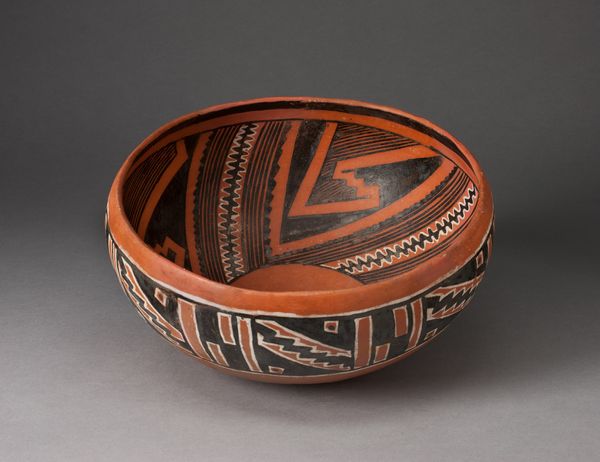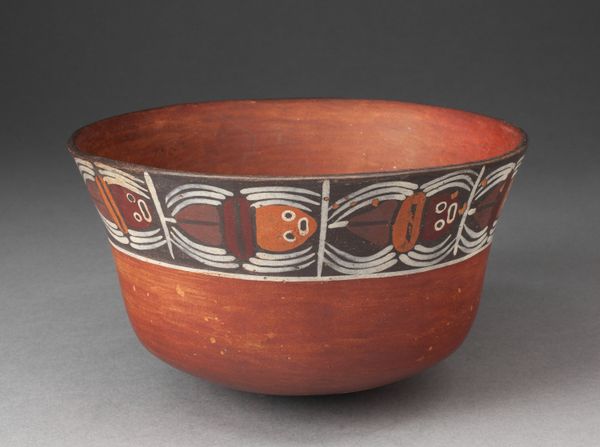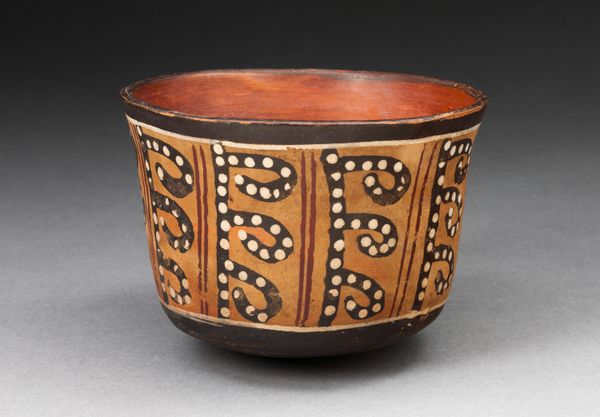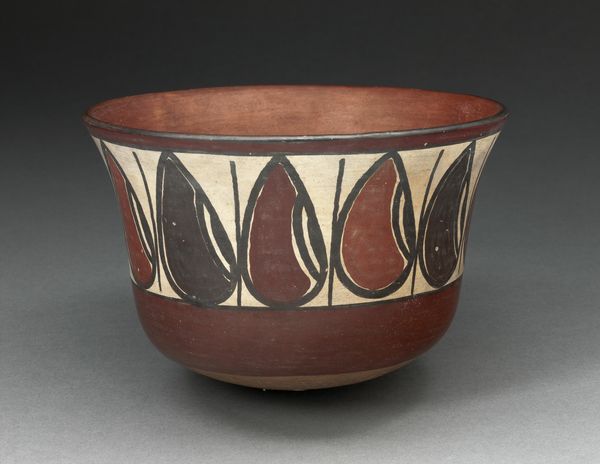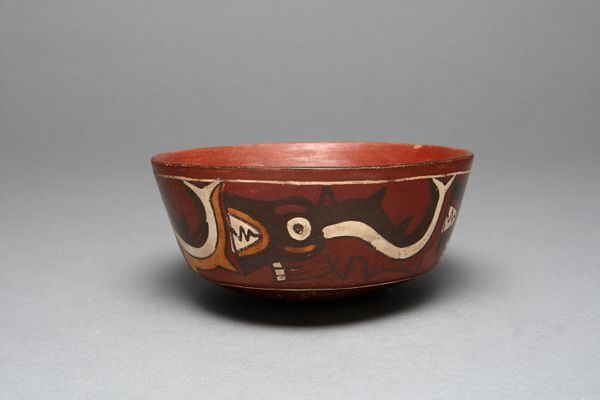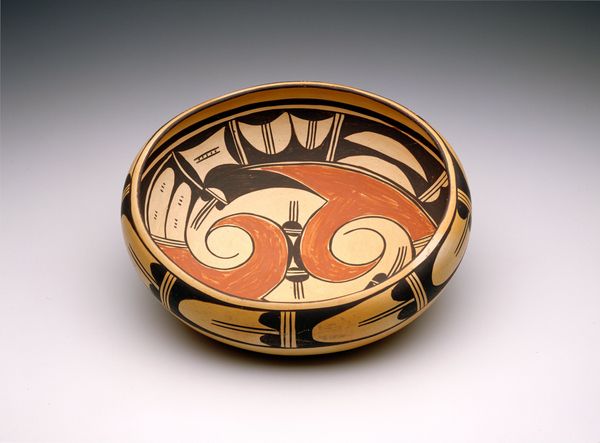
ceramic
#
ceramic
#
geometric
#
indigenous-americas
Dimensions: 7.6 × 17.5 cm (3 × 6 7/8 in.)
Copyright: Public Domain
This bowl was made by an artist of the Nazca culture in ancient Peru. The geometric motifs and bean designs speak volumes about the social and cultural context of its creation. Let's consider the visual codes at play. The beans, rendered in stylized form, are clearly of great importance to the Nazca people. They were an agricultural society and beans likely had dietary or ceremonial significance. The geometric patterns may represent other important elements of their world or abstract spiritual concepts. This wasn't just decoration; this was a culture communicating its values. Scholars of Nazca culture consult archaeological records and anthropological studies, seeking to reconstruct their worldview. Understanding the role of pottery within their society is key. Was this a piece for everyday use, a ritual object, or a grave good? Its presence in a museum like this one also raises questions about cultural preservation and the display of indigenous art. By studying such objects, we gain insights into the beliefs, practices, and social structures of a fascinating civilization.
Comments
No comments
Be the first to comment and join the conversation on the ultimate creative platform.
